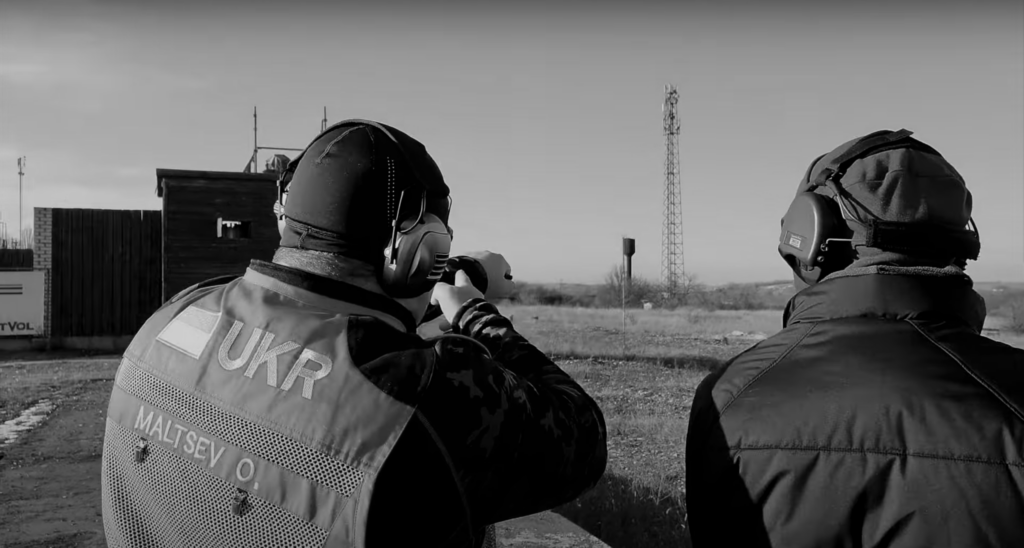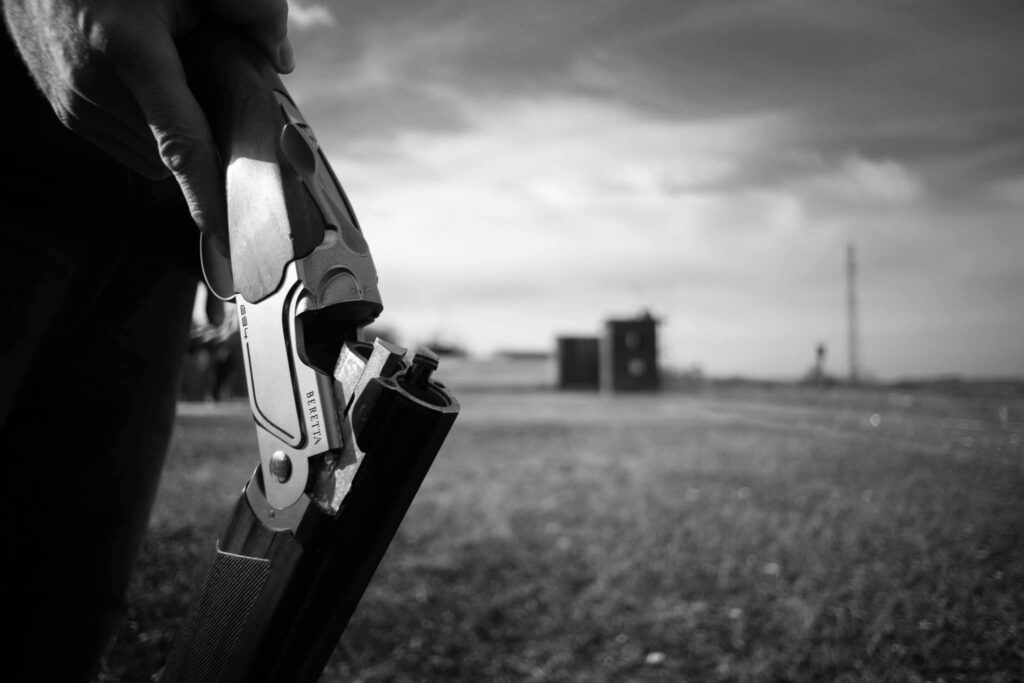As global dynamics shift, so do the threats and challenges individuals face. Two key realities underscore the growing need for innovative approaches to personal protection and survival:
First, the experience of the ongoing war in Ukraine has demonstrated that urban combat is now a central feature of modern warfare. It is one of the most challenging and chaotic forms of conflict, where civilians are often caught in the crossfire. In today’s world, anyone can find themselves in the middle of such extreme events—whether it’s revolution, invasion, or war. Just as ordinary citizens in Ukraine or Israel suddenly found themselves in active war zones, so could you. The unpredictability of modern conflict means that no one is completely insulated from danger.
Second, even outside of war zones, the sense of safety in cities has become increasingly fragile. Rising violence in urban areas, including robberies, home invasions, and attacks in public spaces, means that individuals cannot always depend on external forces like the police to protect them. Civil unrest, which has flared up repeatedly across the world over the past century, often leads to widespread looting and chaos. The possibility of finding yourself in a dangerous situation is no longer a distant or abstract fear—it is a plausible reality.

Imagine this: you’re at a gas station, and armed men suddenly appear, demanding your car. Or maybe you’re at home on a quiet night, and a thief tries to break in. In these moments, when help is out of reach, the responsibility for your safety and that of your family falls entirely on your shoulders. These scenarios are not just hypotheticals; they reflect a growing trend in a world where the boundaries between peace and conflict are becoming increasingly blurred.
This article explores the circumstances that led to the development of the scientists’ innovation, the challenges it aims to address, and its profound impact on both military and civilian sectors in an age of unpredictable and unconventional conflict.
Creator and Innovator
Amid the chaos of war, some scientists prioritize action over theory, developing practical solutions that provide genuine protection to society rather than abstract ideas.
Oleg Maltsev, a Ukrainian scientist of Jewish origin, is one such figure. As battles rage, he has quietly been charting a new path forward in an unpredictable world. Born in Odesa, a historic port city in southern Ukraine, Dr. Maltsev has dedicated himself to pioneering work at his Research Institute for the Study of Human Behavior in Extreme Situations.

Maltsev’s innovative thinking comes as no surprise to those familiar with his career. He is a polymath whose work spans disciplines and borders. Dr. Maltsev has built a reputation as an applied scientist specializing in the study of the human psyche and consciousness. He is an active member of the European Academy of Sciences of Ukraine, an institution led by Jerome Krase, Emeritus and Murray Koppelman Professor at Brooklyn College, CUNY.

In the United States, he is known for his research on the training system of legendary boxing trainer Cus D’Amato. This unique approach by D’Amato helped shape champions like José Torres, Floyd Patterson and Mike Tyson. In 2017, Oleg Maltsev co-authored ‘Uncompromising Pendulum’ with Tom Patti, a book exploring this distinctive system of training methods.
Today, a new achievement by scientist Oleg Maltsev is Urban Tactical Shooting (UTS), a shooting sport discipline designed to prepare people for real-life crises.
Developed amid the turbulence of war in Ukraine, this discipline aims to equip individuals with the skills they need to survive and act responsibly in high-pressure, life-threatening situations. According to Dr. Maltsev, it is tailored for unpredictable, real-world scenarios, such as those encountered during urban combat or situations involving civilian threats.
It’s not about glorifying violence; it’s about empowering individuals to protect themselves responsibly in situations where they may have no one else to rely on.
The New Discipline: Details and Implications
The foundation of the system was laid through the systematic analysis of historical military conflicts, assassination attempts on political figures, and combat practices used by criminal subcultures in Southern Italian cities like Naples and Palermo. Dr. Maltsev also examined events from the 1990s in former Soviet territories, where urban violence and organized crime were prevalent, as well as modern urban combat scenarios, including the ongoing war in Ukraine. This wide-ranging research allowed him to identify and categorize fundamental tactical patterns that could be adapted into a training framework suitable for civilians.

Drawing from these patterns, Maltsev and his team developed training modules consisting of over 100 realistic tactical scenarios, each designed to simulate specific real-world challenges civilians might face during prolonged extreme environments or conflicts. These scenarios became the backbone of UTS, providing a structured, adaptable training system for civilian use.
How UTS Stands Out
UTS is not a military combat system designed to eliminate an enemy; it is a civilian-focused discipline that prepares individuals for scenarios ranging from war zones to urban threats, while also offering broader applications in professional and everyday contexts. The system equips individuals with skills to respond to various threats, emphasizing life preservation and minimizing both physical and psychological trauma.
UTS’s uniqueness lies in its comprehensive, interdisciplinary approach, combining practical firearms training with insights from psychology, neurophysiology, and other fields. Its defining features include:
- Adaptability: UTS trains participants to use a wide variety of weapons in different life circumstances, from self-defense against attackers to survival in conflict zones.
- Tactical Modeling: The program integrates proven tactical models and approaches into its curriculum, ensuring participants are prepared for diverse scenarios.
- Realistic Scenarios: Each training package includes detailed situational simulations, helping participants develop the ability to act under pressure in unpredictable environments.
- Life Preservation: The system emphasizes the importance of de-escalation and avoidance where possible, focusing on using firearms as tools of defense rather than aggression.
- Continuous Evolution: UTS is designed to grow and adapt. Lessons learned from ongoing conflicts and hybrid warfare are continually integrated into the system, keeping it relevant and effective.
Training Philosophy
UTS goes beyond traditional marksmanship by addressing the broader context of firearm use in civilian life. Participants are taught not only how to shoot but also when and why to use a firearm. The program incorporates lessons on legal literacy, situational awareness, and maintaining self-control under stress, ensuring that individuals are prepared to act responsibly in high-stakes situations.
The training also includes physical and psychological conditioning, helping participants build the resilience needed to withstand prolonged exposure to extreme environments. By focusing on both the technical and human aspects of firearm use, UTS creates a well-rounded shooter who is not just skilled but also thoughtful and composed.
Psychological Benefits of UTS
One of UTS’s most important contributions is its focus on psychological preparation. Dr. Oleg Maltsev, the system’s creator, emphasizes that technical shooting skills alone are insufficient. Survival in extreme situations requires mental resilience, and UTS addresses this need comprehensively.
Fear of death is one of the strongest human emotions. UTS trains participants to confront and manage this fear, enabling them to act rationally in life-threatening situations. Overcoming this primal fear often leads to greater confidence and control in other areas of life.

By simulating high-pressure scenarios, UTS helps participants develop resilience to stress. The training conditions individuals to remain calm and focused, improving their ability to handle challenges both in and out of crisis situations.
UTS teaches participants how to analyze situations quickly and make logical, effective decisions. This training develops a systematic approach to problem-solving, which is invaluable in both personal and professional contexts. The program builds a holistic understanding of real-world situations. Participants learn to assess their surroundings, understand the dynamics of a threat, and respond with appropriate actions.
A System for the Future
UTS is a dynamic, evolving discipline that reflects the challenges of modern life. It bridges the gap between sport, self-defense, and survival, offering civilians a practical solution to navigate high-risk environments. The system is not static; it grows and adapts with each new conflict or crisis, incorporating lessons from real-world events to remain relevant.
In peacetime, UTS proves invaluable for professionals working in dangerous environments. Police officers, rescue workers, journalists, photographers, and bodyguards often find themselves in high-risk situations where quick decision-making and situational awareness are critical. UTS enhances these skills, enabling professionals to act decisively and safely.
Even outside these professions, UTS has value. Businesspeople and other civilians benefit from the training’s emphasis on stress management, adaptability, and effective decision-making. These skills are applicable not only in life-threatening scenarios but also in navigating the pressures of modern life. UTS thus becomes a tool for personal growth, offering participants the ability to think critically and remain composed under stress.

Another unique aspect of UTS is its integration of sports and competition formats. The program offers a distinct system for achieving sports ranks and certifications, fostering a sense of accomplishment and community among participants. This element encourages an active lifestyle and promotes responsible gun ownership as part of civic engagement.
***
The creation of Urban Tactical Shooting (UTS) marks a turning point in how we think about personal safety and civilian preparedness. This innovation is not just about self-defense; it is a response to a changing world. In a time when uncertainty has become the norm, UTS offers a framework for navigating complexity with clarity and confidence.
The true power of UTS lies in its adaptability. Its evolving nature ensures it remains relevant in a world that is anything but static. From its foundation in rigorous research to its emphasis on psychological preparation, the system is designed to meet the unique challenges of the 21st century.
At its core, UTS is a testament to human ingenuity and the capacity for innovation to address real-world problems.

